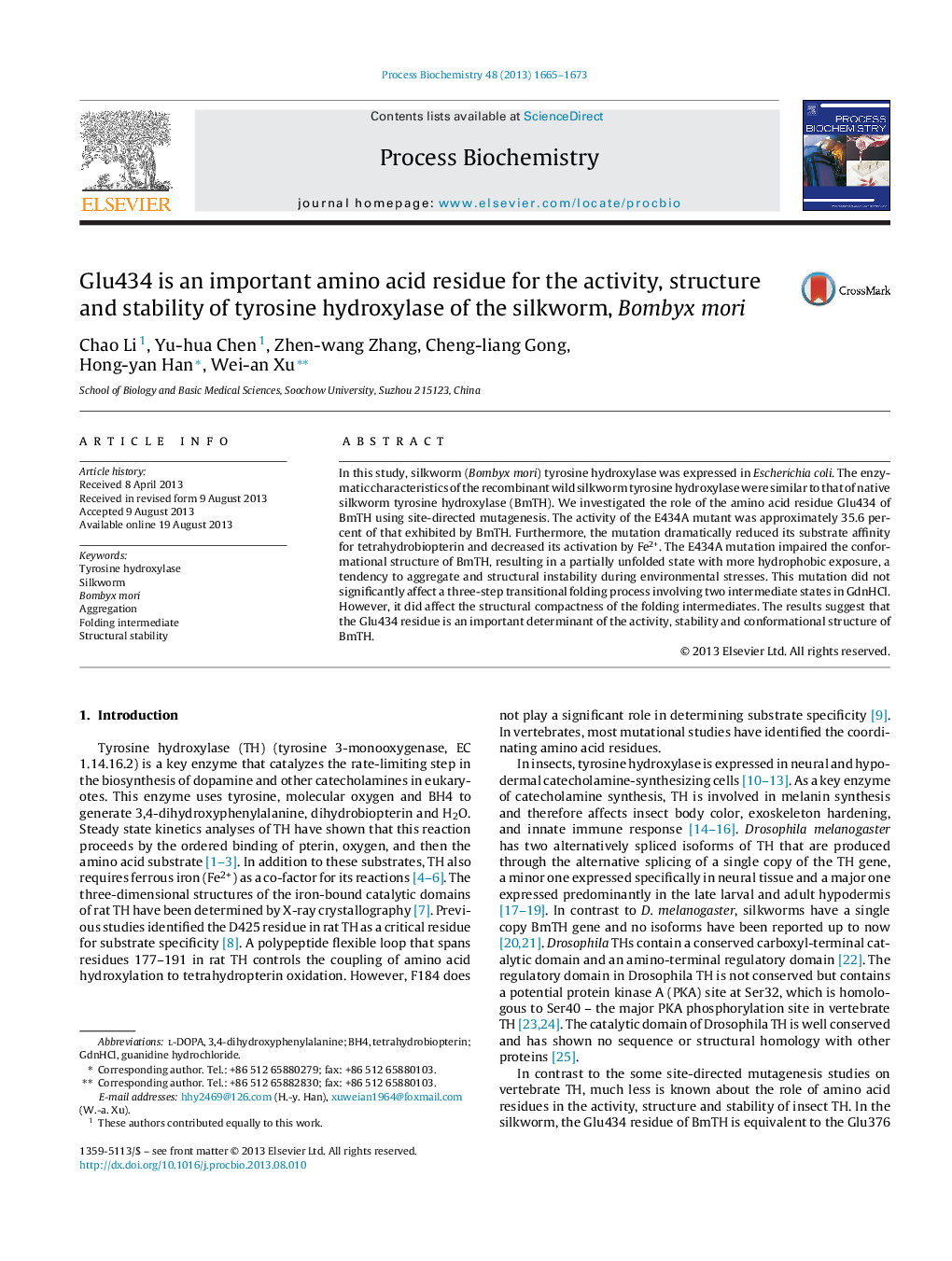| Article ID | Journal | Published Year | Pages | File Type |
|---|---|---|---|---|
| 34598 | Process Biochemistry | 2013 | 9 Pages |
•The E434A mutation reduces the activity of wild-type silkworm tyrosine hydroxylase.•The E434A mutation impairs the conformational structure of wild-type tyrosine hydroxylase.•E434A mutant BmTH is prone to aggregation during environmental stresses.•The E434 mutant does not exhibit altered folding processes involving two intermediates in GdnHCl.•The E434A mutation affects the structural compactness of BmTH folding intermediates.
In this study, silkworm (Bombyx mori) tyrosine hydroxylase was expressed in Escherichia coli. The enzymatic characteristics of the recombinant wild silkworm tyrosine hydroxylase were similar to that of native silkworm tyrosine hydroxylase (BmTH). We investigated the role of the amino acid residue Glu434 of BmTH using site-directed mutagenesis. The activity of the E434A mutant was approximately 35.6 percent of that exhibited by BmTH. Furthermore, the mutation dramatically reduced its substrate affinity for tetrahydrobiopterin and decreased its activation by Fe2+. The E434A mutation impaired the conformational structure of BmTH, resulting in a partially unfolded state with more hydrophobic exposure, a tendency to aggregate and structural instability during environmental stresses. This mutation did not significantly affect a three-step transitional folding process involving two intermediate states in GdnHCl. However, it did affect the structural compactness of the folding intermediates. The results suggest that the Glu434 residue is an important determinant of the activity, stability and conformational structure of BmTH.
